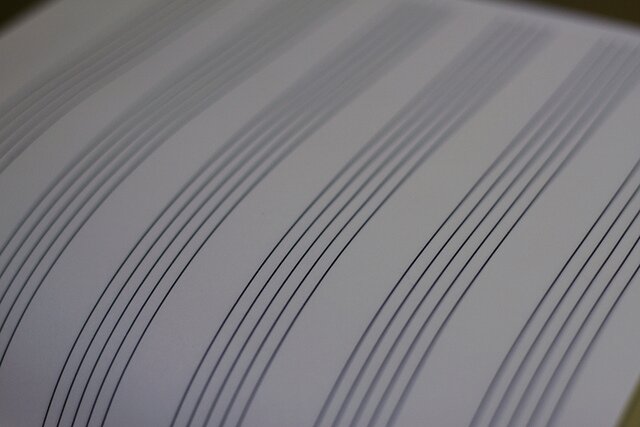
As we discussed in the last lesson, a scale is a collection of notes that belong to a certain key. Now, if we harmonise these notes (play certain notes together) we get a collection of chords that belong to a certain key. This is where having a good knowledge of the major scale can really benefit you as a musician. Once you understand how to harmonise the major scale, you will then know how to work out what chords fit into any major key you happen to be working in. This can obviously be a great help if you are song writing, or trying to play around with a chord sequence to make it sound more interesting.
The simplest way of demonstrating how to do this is to use triads. Triads are chords in their simplest format. As the name suggests, they consist of just three notes. When you play a full major or minor chord, these three notes are repeated to fill the chord across the neck of the guitar. So, to keep things simple we’ll just be looking at the three notes involved in major and minor chords. Below are two diagrams that show you what notes are included in a major and minor triad:
You may be wondering what relevance a minor chord has when talking about the major scale? Well, the reason is; when you take certain notes from the major scale that are a third apart, the interval between the two notes is sometimes one and a half tones, not two tones. This one and a half tone step is a minor third, as it is one semi-tone below (flat) a major third. When this occurs, you end up with a minor chord.
To show you how this is so, below is a diagram of the notes included in the C major scale, followed by diagrams of a C major triad and a D minor triad both using notes directly from the C major scale:
So, as you can see from the diagrams above; if the interval between the root note and the middle note is a major third (2 tones), then the chord is major. If on the other hand, the interval between the root note and the middle note is a minor third (1 ½ tones), the chord is then a minor. These are the intervals that give the chord it’s major or minor characteristics.
To harmonise the rest of the C major scale, or indeed any scale, all you do is stack the notes in thirds. So, you take the root note, add the third above that, and then the fifth above the root note on top. If you can imagine the scale laid out in a line, you’ll see that you stack three notes, skipping a note between each one. You treat each note from the scale as the root note of its relative chord, and then start the stack of three from there, skipping a note from the scale each time you add one. By doing this you create eight chords, each one starting from each note in the scale.
The chart below shows the scale laid out in a line with the notes stacked below as described earlier. At the bottom of each line is the chord that is created by the stacking of the three notes starting from each note in the scale. Whether the chord is major or minor all depends on the interval between the root note and the middle note of the chord (either a major third ‘3rd’ or minor third ‘b3rd’).
The lines show you how the first triad is created, try and work the rest through yourself!
The pattern in the resultant chords is the same every time you harmonise any major scale. You can see from the chart above that the pattern is;
Major – Minor – Minor – Major – Major – Minor – Diminished – Major
This makes it easy to work out what chords fit into any major key. If you can work out the notes in the scale using the formula below, that was detailed in the last lesson, you can then use the formula above to work out what chords are included in that key.
Tone – Tone – Semi-tone – Tone – Tone – Tone – Semi-tone
Let’s look at G major for example. The chart below shows you the notes in the scale and the chords you end up with when you harmonise the scale using the chord formula above.
Practice this process using the random key finder below. For each note it throws up, try and find the notes in that keys major scale, and then have a go at harmonising the scale as show above. If you remember the two formulas listed in this lesson, you shouldn’t have two many problems working it all out.
image credit – riaskiff








